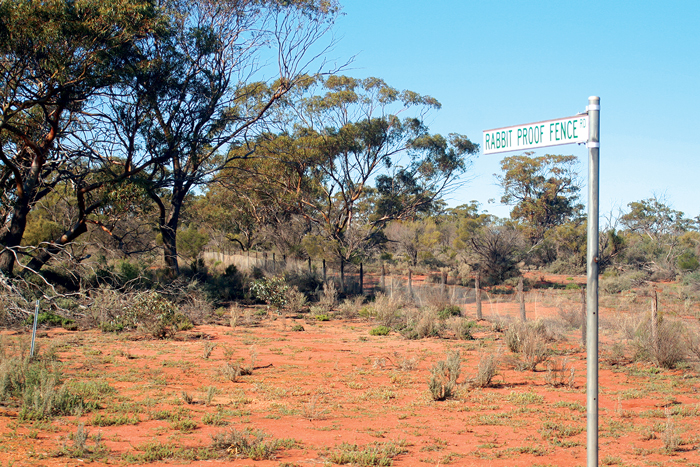Issue 92
Term 1 2015
Teaching Australian Cinema with Rabbit-Proof Fence
Dr Stephen Gaunson Lecturer in Cinema Studies and Crative writing at RMIT Unitversity looks at how to engage with students beyond the political content of the films, they are studying looking at Rabbit-proof fence.
The biggest issue with teaching Australian films is the inherent problem that many students (and teachers) approach them as being boring, dull, or bad. Rather than engage with the films, most view the experience as a civic duty that one must simply 'endure'. While there are no excuses for bad Australian films, teachers must find better ways to engage students beyond the political content of the films. To demonstrate how this can be accomplished, here are a few different ways that the film Rabbit-Proof Fence (Phillip Noyce, 2002) can be taught and appreciated.
First and foremost: there is never one way to discuss a film. To only discuss the 'stolen generation' plot of Rabbit-Proof Fence limits how students can connect with the film while also reducing the film to nothing more than a screen essay designed to 'guilt' the audience. Phillip Noyce's film is far from this and it should be discussed through the many ways it engages with the cinema.
A central interest of Rabbit-Proof Fence is how it relates to the real-life story of three young girls. It is an adaptation of the biographical book Follow the Rabbit-Proof Fence by Doris Pilkington Garimara (the daughter of the central character). The film follows the story of the children as they are taken against their will to a Christian missionary camp at Moore River. Refusing to settle, the girls escape and set off on the 2400-kilometre long journey back to their family.

Rabbit Proof Fence Road: consider the film in it's outback setting
There are various questions around history that this film can facilitate classes to discuss:
- Where is the film set?
- When is the film set?
- What characters are represented?
- How do the 'real' characters that bookend the film add verisimilitude to the story being told?
Furthermore, what aspects offer a sense of truth to the story? Such as the:
- Intertitles which indicate dates and locations
- costumes, fashions, and technology
- language and how the characters speak
- performance of real-life figures
Discussing this film exclusively through its indigeneity is problematic. While the film does represent a historical moment and does depict Indigenous trauma, such elements of race should be raised as questions for students to consider rather than as a categorical statement from the teacher. Instead of saying this is an Indigenous film, it is beneficial to ask a series of questions to further engage students with what is happening within the film.
- What is being represented in this film?
- Is it important to classify a film according to its racial representation?
- Does this film remind you of other films? Which ones? Why?
By shifting the discussion beyond indigeneity, Rabbit-Proof Fence can also be identified through its genre. It is valuable to ask students to identify the various genres that it may also fall into, in addition to being Indigenous. These include but are not limited to:
- family melodrama
- road movie
- suspense
- outback film
- historical film.
Such a conversation on genre can then be stretched by encouraging students to name and examine their favourite genres.
Because genre is as much a marketing device as it is a description of a film, a classroom exercise can be incorporated into the discussion by getting students to simulate the distribution of a selection of advertisements from Rabbit-Proof Fence and other genre films. This can lead to a discussion of how films are advertised and how genre is used as a selling point.
One of the main elements that determine a film's genre and mood is setting:
Setting = time + place.
One exercise I use to display this is playing the opening(s) from a selection of movies in class and asking the students a range of follow up questions:
- What is the setting?
- What is the genre?
- What is the period?
- What are you expecting from this film?
How does Rabbit-Proof Fence open? Encourage your students to apply these questions to the film's opening.
Like many Australian films, Rabbit-Proof Fence is a journey film and can be roughly broken up into the two different journeys that are depicted within the film. The first is the physical journey, where the film is physically navigating through the landscape/environment. Ask students what obstacles are presented to this journey. The other is the imaginative journey, which is the emotional navigation through the situations represented in the film. Explore with your students how the characters find an inner strength through this journey. Do they rely on one another for support?
This area of study requires students to explore the ways in which the 'journey' is considered and expressed through the characters and setting of the film. In doing this, students should be encouraged to discuss their own journeys to remote or foreign landscapes. How has such travel given you a greater understanding of the world?
On top of Rabbit-Proof Fence's political content the film can also be studied for its representation of the outback. Before watching the film (or any other film set in the outback) you can first ask students to identify the outback on a map of Australia and then follow up with a range of questions designed to explore this theme. Such as:
- Where is the outback?
- What is the outback?
- Describe the outback?
- What images/memories do you have of the outback?
- What films have you seen depicting the outback?
After watching the film, the following questions can be discussed:
- What sort of outback was represented?
- What images of the outback in the film surprised you?
- Is this outback similar to other depictions of the outback?
- Did you see images that you've never seen before?
Another element that can be discussed is the act of watching the film itself:
- Where was the film watched?
- How is the experience of watching the film with others different to watching it alone?
- How do you normally watch movies: Cinema? iPad? TV? Computer?
- How would you view this film differently if you had watched it in such a way, rather than in class?
- What sort of audience is suited to Rabbit-Proof Fence? Young audience? Older audience? Multiplex audience?
- This film was directed by a white Australian (Phillip Noyce). Does this alter how you perceive it? Is this information important?
A final word: as educators of Australian films we need to supply students with the skills of visual literacy through the broader canon of Australian cinema history and Australian cultural history. This involves exposing students to the many diverse ways in which films can be read and understood.
Image credits
- Rabbit Proof Fence Road: Photography by uhcstj. Available at: https://flic.kr/p/55SGPe. CC BY-NC.
